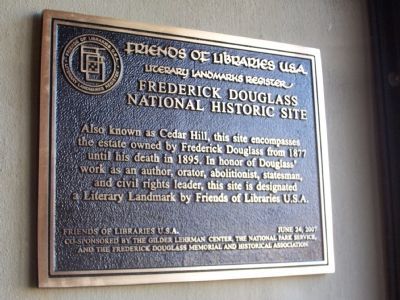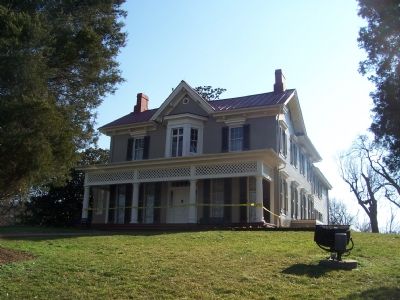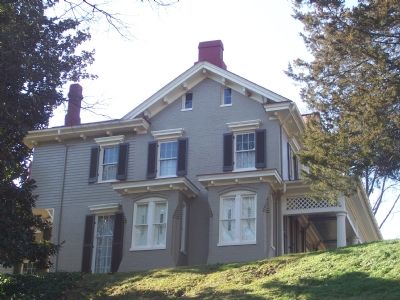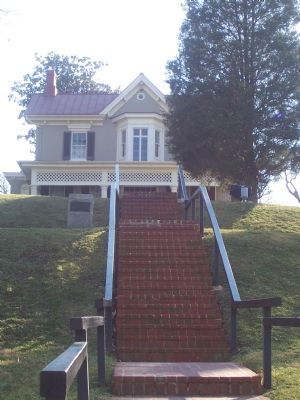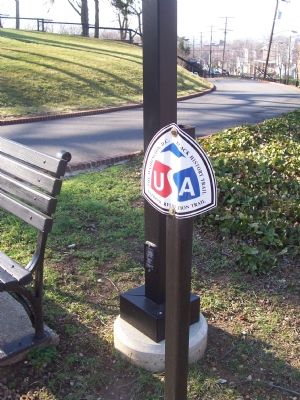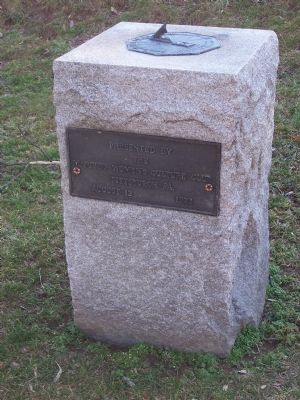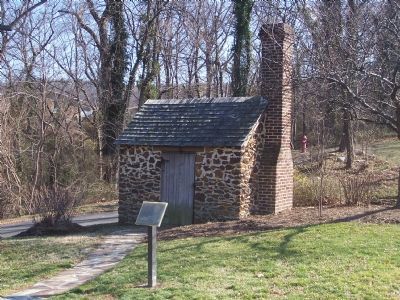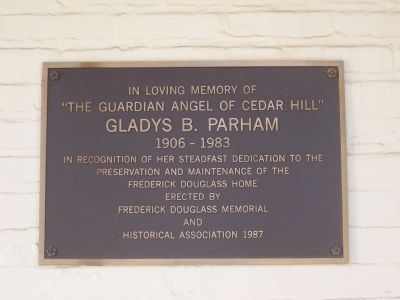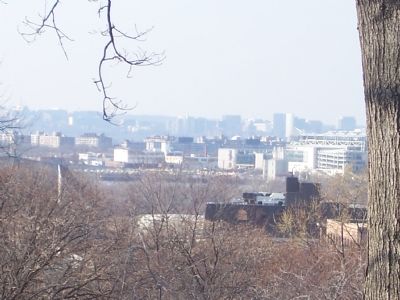Anacostia in Southeast Washington in Washington, District of Columbia — The American Northeast (Mid-Atlantic)
Frederick Douglass National Historic Site
Erected 2007 by Friends of Libraries, U.S.A. Co-sponsored by the Gilder Lehrman Center, the National Park Service, and the Frederick Douglass Memorial and Historical Association.
Topics and series. This historical marker is listed in these topic lists: Abolition & Underground RR • African Americans • Government & Politics • War, US Civil. In addition, it is included in the Literary Landmarks, and the National Historic Landmarks series lists. A significant historical year for this entry is 1877.
Location. 38° 51.8′ N, 76° 59.117′ W. Marker is in Southeast Washington in Washington, District of Columbia. It is in Anacostia. Marker can be reached from the intersection of W Street Southeast and 14th Street Southeast, on the left when traveling west. This marker is on the south wall at the entrance to the National Park Service visitors center, just north of the Frederick Douglass home site on Cedar Hill. Touch for map. Marker is at or near this postal address: 1411 W Street Southeast, Washington DC 20020, United States of America. Touch for directions.
Other nearby markers. At least 8 other markers are within walking distance of this marker. Frederick Douglass's Rustic Retreat (within shouting distance of this marker); The Sage of Anacostia (about 300 feet away, measured in a direct line); Uniontown, DC's First Suburb (approx. 0.2 miles away); Mother Churches and Their Daughters (approx. 0.2 miles away); Rose's Row (approx. ¼ mile away); Education Matters (approx. ¼ mile away); Good Times on Good Hope (approx. ¼ mile away); Transit and Trade (approx. ¼ mile away). Touch for a list and map of all markers in Southeast Washington.
Regarding Frederick Douglass National Historic Site. Frederick Douglass was born into slavery on the Eastern Shore of Maryland in 1818, and was given the name Frederick Augustus Washington Bailey (Baly), after his mother Harriet Bailey. During the course of his remarkable life he escaped from slavery, became internationally renowned for his eloquence in the cause of liberty, and went on to serve the national government in several official capacities. Through his work he came into contact with many of the leaders of his times. His early work in the cause of freedom brought him into contact with a wide array of abolitionists and social reformers, including William Lloyd Garrison,
Elizabeth Cady Stanton, John Brown, Gerrit Smith and many others. As a major Stationmaster on the Underground Railroad he directly helped hundreds on their way to freedom through his adopted home city of Rochester, NY.
Renowned for his eloquence, he lectured throughout the US and England on the brutality and immorality of slavery. As a publisher his North Star and Frederick Douglass’ Paper brought news of the anti-slavery movement to thousands. Forced to leave the country to avoid arrest after John Brown’s raid on Harpers Ferry, he returned to become a staunch advocate of the Union cause. He helped recruit African American troops for the Union Army, and his personal relationship with Lincoln helped persuade the President to make emancipation a cause of the Civil War. Two of Douglass’ sons served in the 54th Massachusetts Regiment, which was made up entirely of African American volunteers. The storming of Fort Wagner by this regiment was dramatically portrayed in the film Glory! A painting of this event hangs in the front hall at Cedar Hill.
All of Douglass’ children were born of his marriage to Anna Murray. He met Murray, a free African American, in Baltimore while he was still held in slavery. They were married soon after his escape to freedom. After the death of his first wife, Douglass married his former secretary, [women’s suffrage activist] Helen Pitts of Rochester, NY. Douglass dismissed the controversy over his marriage to a
White woman, saying that in his first marriage he had honored his mother’s race, and in his second marriage, his father’s.
In 1872, Douglass moved to Washington, DC where he initially served as publisher of the New National Era, which was intended to carry forward the work of elevating the position of African Americans in the post-Emancipation period. This enterprise was discontinued when the promised financial backing failed to materialize. In this period Douglass also served briefly as President of the Freedmen’s National Bank, and subsequently in various national service positions, including US Marshal for the District of Columbia, and diplomatic positions in Haiti and the Dominican Republic.
[extracted from “The Life of Frederick Douglass” at http://www.nps.gov/archive/frdo/fdlife.htm]
Related markers. Click here for a list of markers that are related to this marker. To better understand the relationship, study each marker in the order shown.
Also see . . .
1. Frederick Douglass National Historic Site. National Park Service site. (Submitted on February 11, 2008, by Craig Swain of Leesburg, Virginia.)
2. Frederick Douglass Residence (Frederick Douglass National Historic Site)
. African American Heritage Trail (Submitted on January 16, 2018, by Devry Becker Jones of Washington, District of Columbia.)
Additional keywords. Reconstruction
Credits. This page was last revised on January 30, 2023. It was originally submitted on February 11, 2008, by Richard E. Miller of Oxon Hill, Maryland. This page has been viewed 4,018 times since then and 38 times this year. Last updated on March 13, 2011, by Richard E. Miller of Oxon Hill, Maryland. Photos: 1. submitted on February 11, 2008, by Richard E. Miller of Oxon Hill, Maryland. 2, 3, 4, 5, 6, 7, 8, 9. submitted on February 13, 2008, by Richard E. Miller of Oxon Hill, Maryland. • Bill Pfingsten was the editor who published this page.
